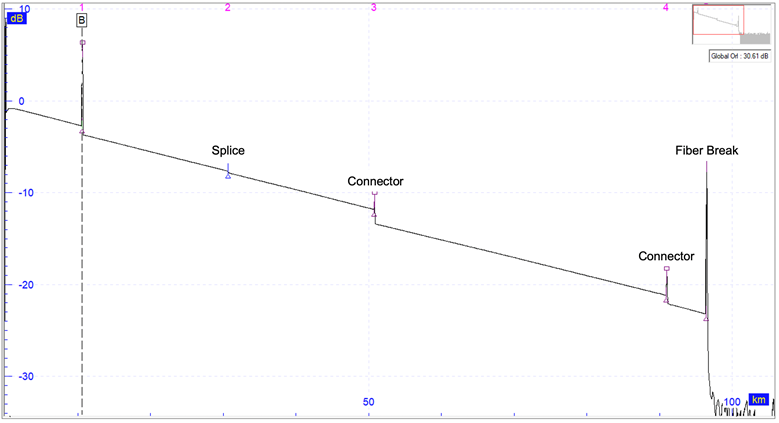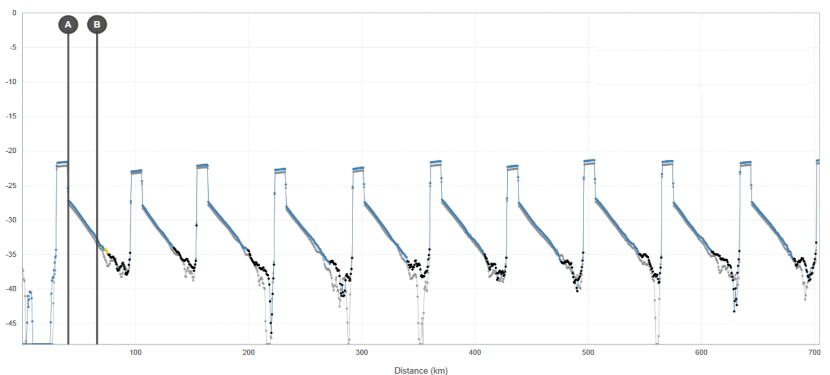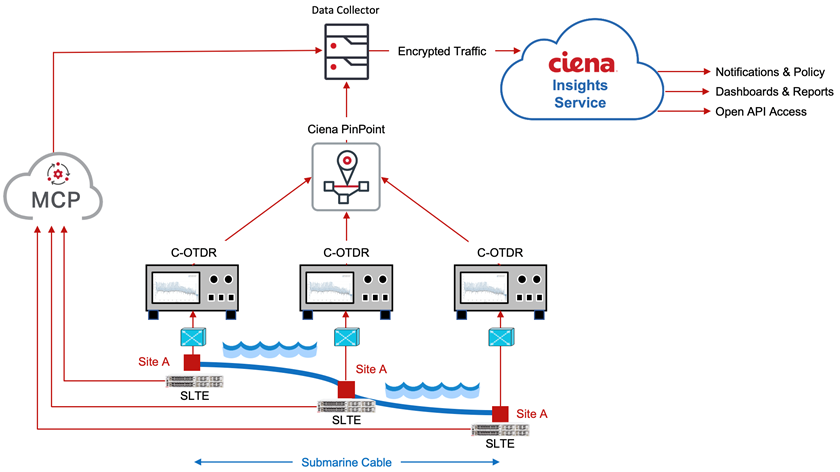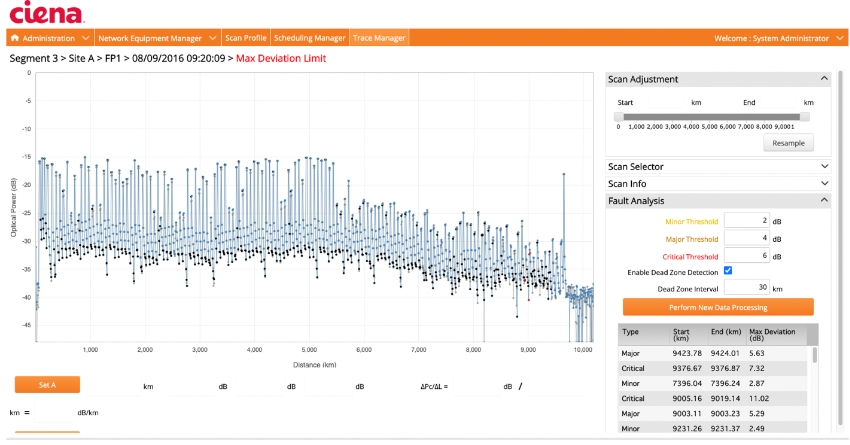Unique insights into your submarine network
There’s more to submarine cables than new builds and upgrades
Announcements related to new submarine cable builds and capacity upgrades get most of the fanfare these days, and rightfully so, but there’s so much more to owning and operating a submarine cable network. Once a submarine cable system (wet plant) is designed, deployed, and enters its Ready-for-Service (RFS) state, operators must ensure cable users have a consistent, reliable, and available service at all times – no excuses are tolerated as we’re utterly dependent on connectivity.
Unfortunately, issues have and will continue to arise, so having the necessary tools in place to proactively and reactively address such challenges is of utmost importance. This is how operators maintain expected quality of experiences to sustain ongoing customer loyalty, either directly for wholesalers, or indirectly for Internet Content Providers (ICPs) connecting users to their content hosted in data centers and served over associated Content Delivery Networks (CDNs).
Ciena offers tools and services to help network operators ensure the highest quality of experience by providing actionable insights based on streaming measurement data from their submarine cable networks. One such tool is the Ciena Insights Service, which leverages the latest optical hardware and intelligent software technologies. In this blog, we’re going to focus specifically on OTDR and C-OTDR applications and services that allow submarine cable network operations to come of age.
What is an OTDR?
An Optical Time Domain Reflectometer (OTDR) is a hardware-based device that launches light into an optical fiber and then precisely measures the elapsed time and intensity of the light reflected back. This allows an OTDR to accurately calculate the distance to issues and anomalies in the fiber plant, such as excessive attenuation, improper splices, and outright fiber breaks. The distance is calculated using the known speed of light in the optical fiber and the elapsed time it takes to receive the injected test signals.
OTDRs are used on unamplified fiber segments, so its distance measurements are limited from the cable landing station to the first submerged repeater (optical amplifier) of the wet plant, which is where most submarine cable faults are incurred due to human-centric naval activities such as dredging, anchoring, and fishing. Thus, the OTDR provides invaluable information about the most vulnerable part of the wet plant to submarine cable operators and allows cable operators to rapidly locate inevitable cable cuts, fix them, and get the cable up and running to maintain availability.

Figure 1: Optical Time Domain Reflectometer (OTDR) operation
OTDR measurements are presented as a graphical trace of reflected light intensity (dB) as a function of distance (km), shown in Figure 2. This allows operators to characterize, troubleshoot, and maintain their optical networks, overland and undersea. Operators can remotely “see” fiber splices, connectors, excessive loss, fiber cuts, and other anomalies, which greatly help with the ongoing operations tasks that become the operator’s focus once the cable is deployed and upgrades completed.

Figure 2: Example of an Optical Time Domain Reflectometer Operation (OTDR) scan
Traditionally, operators had to put links out-of-service to perform required OTDR scans. Ciena offers PinPoint advanced fiber analytics, a value-add application of Ciena’s MCP domain controller, that leverages OTDR capabilities integrated directly into select optical interface modules. Network operators can perform in-service OTDR scans of the terrestrial backhaul network, with no impact to user traffic, to proactively check for fiber degrades or bad repairs, address issues, and avoid future outages. PinPoint also allows operators to compare executed OTDR traces over time. The original baseline trace is used to compare new traces after issues were addressed, to validate fiber repairs were properly completed. This helps to ensure optimal optical transmission performance and overall network availability over the life of an optical network.
What is a C-OTDR?
A Coherent Optical Time Domain Reflectometer (C-OTDR) provides dB vs. km attenuation traces of amplified (repeatered) line systems over the entire length of the submarine cable. A submarine optical Fiber Pair (FP) is tested by launching a test signal in transmit (Tx) direction fiber. The Rayleigh backscattered light is measured in the receive (Rx) direction fiber after it’s coupled at each amplifier (submarine repeater) via a High Loss Loop Back (HLLB), as shown in Figure 3. The C-OTDR is assigned a DWDM channel typically far away from in-service DWDM channels to minimize any chances of interference. There’s obviously more technology and associated complexity as to exactly how a C-OTDR works, but you get the idea.

Figure 3: Coherent Optical Time Domain Reflectometer (C-OTDR) operation
C-OTDRs test the entire amplified (repeatered) submarine cable, while in-service, for a more complete illustrated view to cable operators so they can monitor the continuity of their entire wet plant. By leveraging advanced correlation techniques, operators can reliably characterize and locate a variety of cable issues, such as the cable distance to a cable cut caused by an errant fishing trawler. These insight helps maintenance fleets to better locate exactly where the submarine cable outage cause is and then repair it. It also highlights abnormal attenuation or reflections to proactively address any anomalies. As shown in Figure 4, the C-OTDR provides a trace of a submarine cable over its entire length, 700km in this case, and can locate faults within approximately 10 meters – pretty impressive, and critically important for troubleshooting.

Figure 4: Example of a Coherent Optical Time Domain Reflectometer (C-OTDR) scan
The many operational benefits of the C-OTDR-based Ciena Insights Solution are beneficial to any submarine cable operator and is why multiple wholesalers and Internet Content Providers (ICPs) alike have already deployed it.
Ciena Insights Service
Although a standalone OTDR and C-OTDR are invaluable tools on their own, its far more insightful when more than one is combined with powerful data analytics, as illustrated in Figure 5, where a C-OTDR is placed at each cable landing station alongside an optical switch, which enables in-service scans on each individual Fiber Pair (FP). Scans are remotely controlled and scheduled from a Network Operations Center (NOC) on an hourly, daily, weekly, or monthly basis. An onsite collector is installed to also gather raw performance data from any vendor’s Network Management System (NMS). If Ciena’s MCP domain controller is being used, the collector functionality is already integrated and made available as a microservice that’s easy to deploy and use. The collector encrypts and securely transmits all gathered network telemetry data to Ciena’s cloud-based analytics platform where actionable insights are provided via intelligent machine learning-based algorithms.
Besides C-OTDR scan data, other measured data is also gathered via streaming telemetry such as amplifier gain, input power, output power, laser pump current, Bit Error Rate (BER), and any other measurement data provided by highly instrumented networks. Together, this gathered data provides a holistic view of ongoing network health. Taking it a step further, gathered measurement data and machine learning-based analytics can be used to perform preventive maintenance to predict and address inevitable issues and outages – before they occur – for optimal network availability and a sustained brand image.

Figure 5: Example of the Ciena Insights Service architecture
A key benefit of the Ciena Insights Service is that it’s cloud-based, meaning machine learning can be further optimized from the behavior and trending patterns gathered—and completely anonymized—from a global database of network data. This yields a learning set of data that’s far more expansive than a single deployment site, as it takes into consideration operational parameters from all sites. More gathered and analyzed data provides improved insights to all submarine cable operators.
Visualizing the data is as important as the content itself
Just as important as gathering data and performing analytics is how uncovered insights are shaped, visualized, and packaged. As such, Ciena Insights Service presents data and insights graphically in an effective and impactful manner via notifications, charts, dashboards, and reports that are all accessible via a web portal and any browser, anywhere and anytime – a critical benefit in these challenging times where travelling is highly restricted. This allows cable operators to monitor, assess, and address inevitable submarine cable network challenges to ensure an optimal performance for submarine cable users.

Figure 6: Example of the Ciena Insights Service C-OTDR visualization
Software innovation in the fields of machine learning, artificial intelligence, and data analytics is facilitated by Data Center Interconnect (DCI) networks, overland and undersea, that create a “virtual data center without walls” providing essentially unlimited storage and compute resources. The logical question is, why not leverage software-based advances enabled by submarine and terrestrial networks to improve the operation of these very same networks? Seems intuitive, no?
This is exactly what we did with our Ciena Insights Service.
We leverage the latest advances in big data, machine learning, and highly instrumented networks with cloud-based storage and compute to provide network operators, wholesalers and ICPs alike, with a unique window into their submerged assets.






